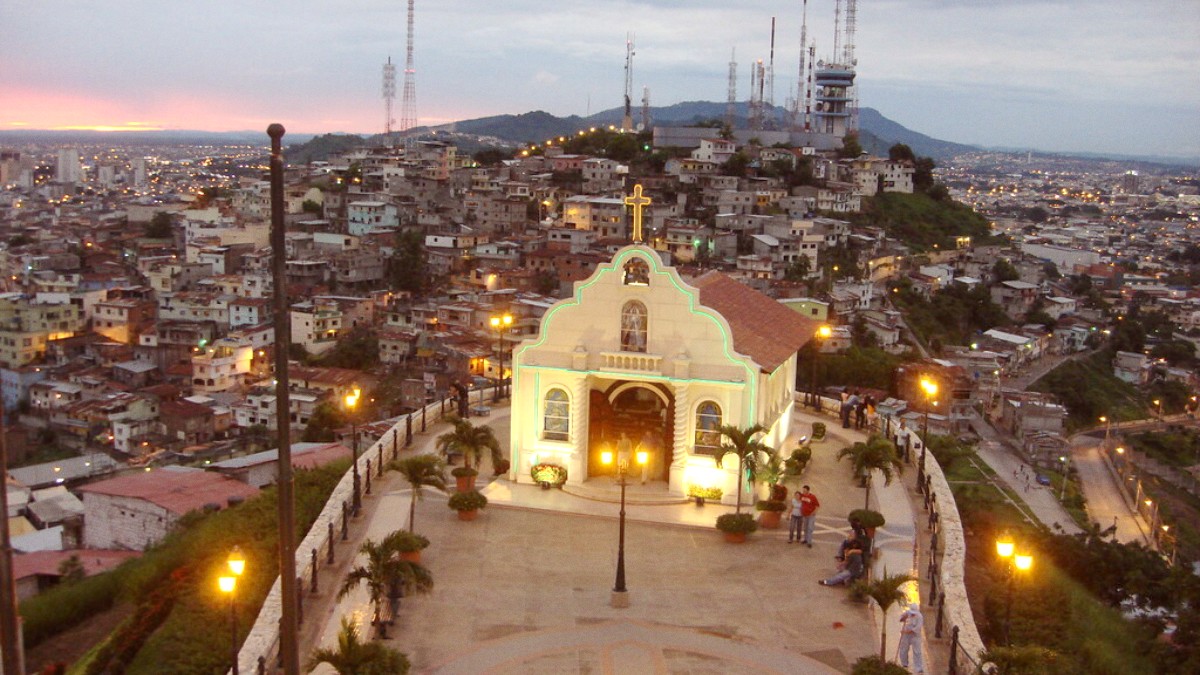
Pacific Coast And Lowlands, Ecuador
Guayaquil's cuisine is influenced by its location on the Pacific coast and the Guayas River. This means a strong emphasis on fresh seafood, abundant plantains, and rice. The city's history as a major port brought diverse ingredients.
Expect a flavorful profile that balances savory, sometimes subtly spicy, and citrus notes. Seafood, plantains, and rice are staples. Aromatics like onions, garlic, cilantro, and local peppers form the flavor base.
Local dining customs are generally relaxed. Keeping hands above the table is polite. Wait to be seated in more formal restaurants.
Meals are often communal, especially in casual settings. Sharing dishes is common.
A 10% service charge often appears on the bill. If not included, a 10% tip is standard for good service.
Ecuador's national dish, a hearty fish soup (usually tuna) with pickled red onion, yucca, and cilantro. Served with chifles or popcorn.
A Guayaquil icon, enjoyed for breakfast or lunch.
Mashed green plantain balls, often filled with cheese or chicharrón (fried pork cracklings). Typically fried until golden brown.
A delicious, filling breakfast staple.
Ecuadorian shrimp ceviche is distinct; often cooked, the shrimp serve in a tomato-based sauce with red onions, cilantro, and lime. Comes with chifles or popcorn.
A refreshing coastal classic.
Empanadas (fried pastries), Maduro con Queso (baked ripe plantain with cheese), Chifles/Patacones (plantain chips), Espumilla (meringue-like sweet), Morochos (sweet corn drink).
Non-alcoholic: Jugos naturales (fresh fruit juices), Horchata, Colada Morada (seasonal). Alcoholic: Pilsener/Club Premium (beers), Aguardiente (sugarcane spirit), Canelazo (warm aguardiente cocktail, more common in highlands).
Guayaquil features several high-end restaurants for a refined culinary experience.
For quality dining without the high price tag, these places are popular.
Affordable and authentic food experiences.
These options are increasingly present. Traditional Ecuadorian cuisine can be adapted. Look for rice, beans, plantains, yucca, and salads. Specify "sin carne" and "sin pollo."
"Bolón de queso" is a common vegetarian breakfast or snack.
Halal or Kosher restaurants are rare. Gluten-free: many traditional dishes are naturally gluten-free. Cross-contamination is a risk. Clearly communicate your needs using "sin gluten."
Carry an allergy card translated into Spanish for severe allergies. Self-catering in an apartment offers greater control.
Learn coastal cuisine like encebollado.
Explore markets and eateries, with tastings.
Tours to nearby cacao farms.
Occasional "ferias gastronómicas" are held.
Fanesca, a hearty soup with grains, beans, and dried cod, is traditionally consumed during Holy Week (Semana Santa). Roast turkey is a popular dish for Christmas.
Fanesca symbolizes the gathering of the twelve apostles and tribes of Israel.
The HappyCow App helps locate vegetarian and vegan-friendly restaurants. Learn Spanish phrases for dietary restrictions for clear communication.
Self-catering options are valuable for strict diets.
Discover top-rated dining experiences and local food tours through GetYourGuide.
For lunch, look for the "menú del día" for a complete, affordable meal.
Trying street food from reputable, busy vendors (e.g., near Parque de las Iguanas or in busy market areas) presents an authentic local experience.
Fresh fruit juices (Jugos naturales) are a particular highlight. Explore unique local drinks like Morochos or Horchata.
Indulge in local sweets like Dulce de Leche or the simple yet delicious Fig and Cheese.
"Huecas" are small, unpretentious eateries. Asking locals for their favorites leads to authentic, affordable dishes.
This experience truly reflects local life.
Basic Spanish phrases for ordering or inquiring about ingredients are valuable for a smoother dining experience.
Many menus are only in Spanish.
When trying street food, choose busy stalls with visible fresh food. This usually indicates high turnover and better hygiene.
Drink bottled water only. Avoid tap water, even for brushing teeth. This precaution reduces the risk of stomach issues.
Engaging with locals about their favorite dining spots can lead to authentic and memorable meals.
Exploring Guayaquil's food scene is a journey into its cultural heart. Be adventurous and taste local specialties.